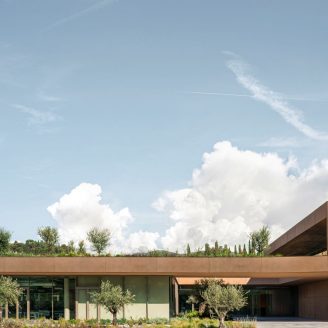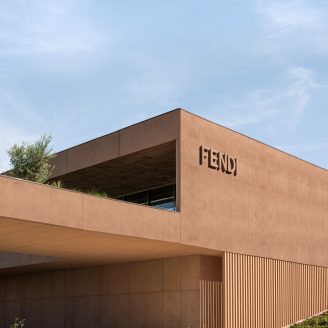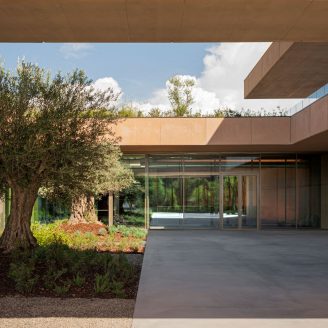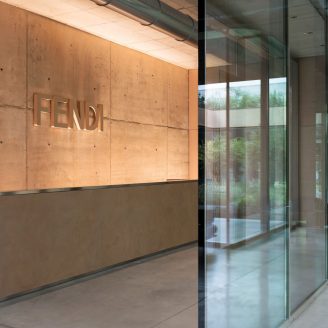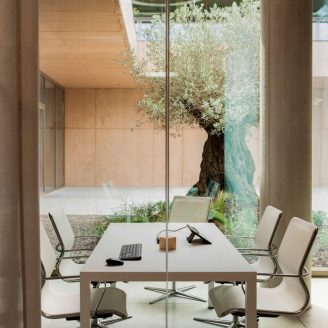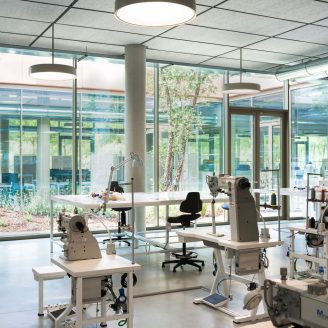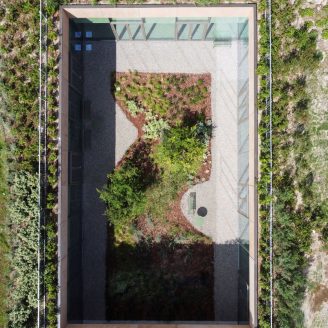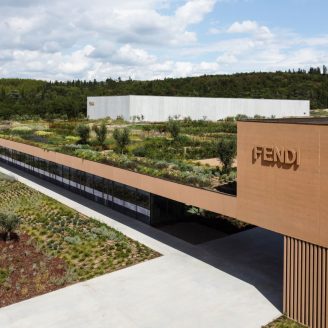A production building conceived to become an integral part of its surroundings and mend a long-standing rift in the hillside of the site in which it is located: this is the new Fendi Factory in Bagno a Ripoli, Florence, designed by the Milan-based Piuarch studio in collaboration with Fendi’s Architecture Department and landscape architect Antonio Perazzi.
The complex of about 14,000 square metres stretches horizontally over a single level to create a free form driven by the needs of the production process; the site plan combines different functions, merging them into fluid pathways that run horizontally through it, while a sort of backbone connecting the spaces, with transparent walls, also encourage people to move around and socialise.
The complex will house management and administrative offices, a restaurant, a production warehouse, workshops and a school for haute leather goods; it aims to define the conditions for a renewed visual collaboration between architecture and environment. In fact, the characteristics of the site, impacted by the logic of relying on the brick industry and the quarry once functioning on the lot, required significant restoration work.
In dialogue with its natural surroundings, the Fendi building, apparently underground owing to the landscaping choice of creating a continuous and extensive green roof, becomes an integrated ecological system that recreates the contours of the land to restore the shape of the original hillside. In addition, a vast roof garden that fulfils not only an environmental but also a social and community role, becoming a user-friendly space and a venue for employees to socialise.
The green roof, hollowed out by patios that disrupt its continuity and light up the interior spaces, establishes an unprecedented system of counterbalances: ventilation and natural light, use of materials that evoke the colours of the location, transparent external and internal walls, all ensure a visual and physical, almost osmotic exchange between the artificial and natural environments, between the interior and exterior.
From the green roof to the courtyards, to the industrial park surrounding it, the idea was to transform the entire site into a new and extended garden, also with the purpose of improving the quality of the working spaces, in order to increase responsibility towards the environment and society.


